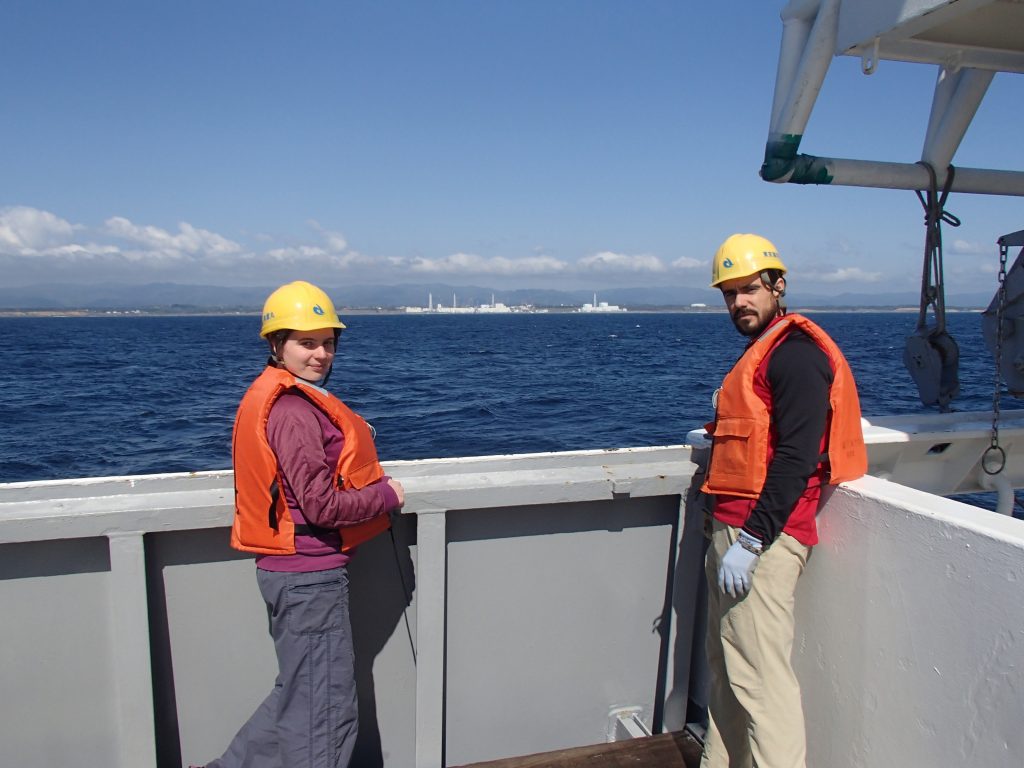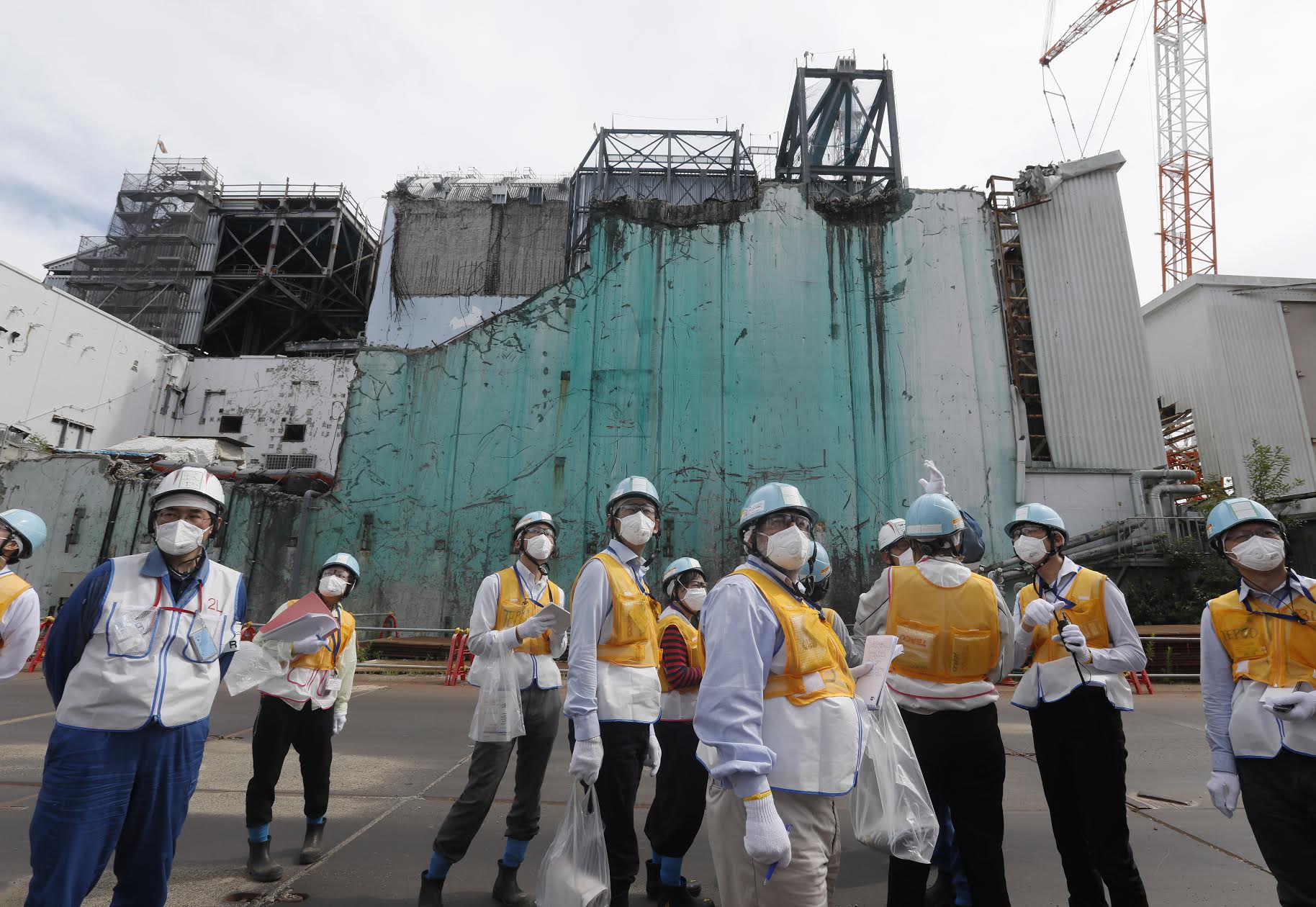In March and April of 2011 the Fukushima Nuclear Power Plant disaster resulted in what was the largest ever accidental release of radioactive material into the ocean. Zofia Baumann, assistant professor of marine sciences, has researched the impacts of the disaster on marine ecosystems in the Pacific Ocean, and has authored a section of a chapter in the forthcoming book “Environmental Contamination from the Fukushima Nuclear Disaster” detailing the findings of her research. She discussed her research with UConn Today, sharing some unexpectedly good news in the wake of the disaster.
Q: What are some of the impacts of the Fukushima disaster that you have found?
A: The Fukushima disaster was complex, radioactivity was deposited into the atmosphere, on the land, but much of it was dispersed into the ocean, which was actually seen as a blessing in disguise.
Even though the levels of radiation in the area and in the marine organisms were elevated, they were actually not a threat to the ecosystem or to human consumers in most cases.
Through our research we found that due to the massive currents present in the ocean, this radioactivity deposited into the ocean was quickly dispersed. The most problematic marine organisms were those found in the harbor near the plant, but the levels of radioactivity in that area reduce exponentially as one moves away from the area. The radioactivity levels are rarely a cause for concern.
‘We do not have a ‘planet b’ and we should be as knowledgeable about environmental issues as possible.’ — Zofia Baumann
Q: Can you tell us about how you tracked the radioactivity?
A: Fukushima delivered artificially made radionuclides, ones that are not found in nature. We tracked Cesium 134 and 137 that were made through the process of creating energy at the nuclear power plant.
While certainly the amount of radioactivity dumped into the ocean, atmosphere, and onto the land was to the point where we could detect the radiation, for most marine organisms it wasn’t because levels were dangerously high, it was because our equipment was really, really good.
However, in terms of health impacts associated with the consumption of fish, the levels were negligible.
Our tools are great and we are able to detect chemicals at an extremely low concentration, but just because we detect radioactivity, it doesn’t mean it is dangerous.

Q: Are there possible long-term effects resulting from the disaster?
A: When you talk about radioactivity, people get nervous. We worked with researchers who are experts in the levels of risk of radioactivity, called dosimetry, who can calculate the dose to a human and to animals. We concluded the dose received by people consuming contaminated tuna at the levels found in Japan and elsewhere are so low, that from a statistical point of view, we were unable to calculate any risk because those levels are extremely low.
One very positive outcome from the research on the disaster was with Pacific bluefin tunas which are heavily overfished. Based on findings from our research the Japanese government created new regulations to provide more protection for these fish. So the cool thing is that we were able to use the pollution disaster to learn something that we would not have been able to learn otherwise.
Q: Was the Fukushima disaster an example where dilution really was a solution to pollution?
A: Absolutely, this is one situation where ‘dilution is the solution to pollution’. To illustrate this, a good comparison is between Fukushima and Chernobyl. Chernobyl polluted the Black, Baltic, and other in-land seas and the dilutions of the radioactive materials was not significant compared to the massive currents that continuously flush the Atlantic or Pacific oceans. The strong ocean currents worked to disperse the radiation quickly.
Of course prevention of spills is the most important solution.
Q: Can this research be applied to other types of environmental contaminants?
A: Yes, but again, it is important to understand the contaminant and the situation. Where is the source of the contaminant? Is it organic or not? Is it soluble in the water or not? Some of these contaminants can be considered global pollutants, meaning they get deposited into the atmosphere and distributed globally. Eventually the contaminants will come back down to Earth in the form of rain for example.
Some contaminants will also stay more local. For instance in Connecticut, mercury is a persistent contaminant in the Danbury area. Danbury was once world-famous for hat making and mercury nitrate was used in the process. Mercury is still slowly released into the rivers in the area, and eventually to Long Island Sound.
Q: What would you consider to be some key takeaways from your research into this disaster?
A: We are living in a radioactive world. For example, potassium is everywhere. It is in the soil, it is in concrete, which is in our building walls, it is in the food — wherever we are, there is potassium and a small fraction of that is radioactive potassium. There are also other naturally occurring radioactive isotopes that have been on planet Earth long before life occurred.
Unfortunately there is a lot of confusion about radioactivity. Not all radioactivity is dangerous, but that is not to say radioactivity from bombs or power plants is not serious. It would be very beneficial for people to learn more about radioactivity, for instance, what was released into the ocean from Fukushima fortunately did not pose a very large threat.
Radioactivity is really scary when you are talking about nuclear weapons, clearly that is a very troubling situation but we must ensure we are not comparing apples with oranges.
It is important to be well informed and I encourage everyone to learn more about environmental contaminants, their activities, and chemistry. We do not have a ‘planet b’ and we should be as knowledgeable about environmental issues as possible.



